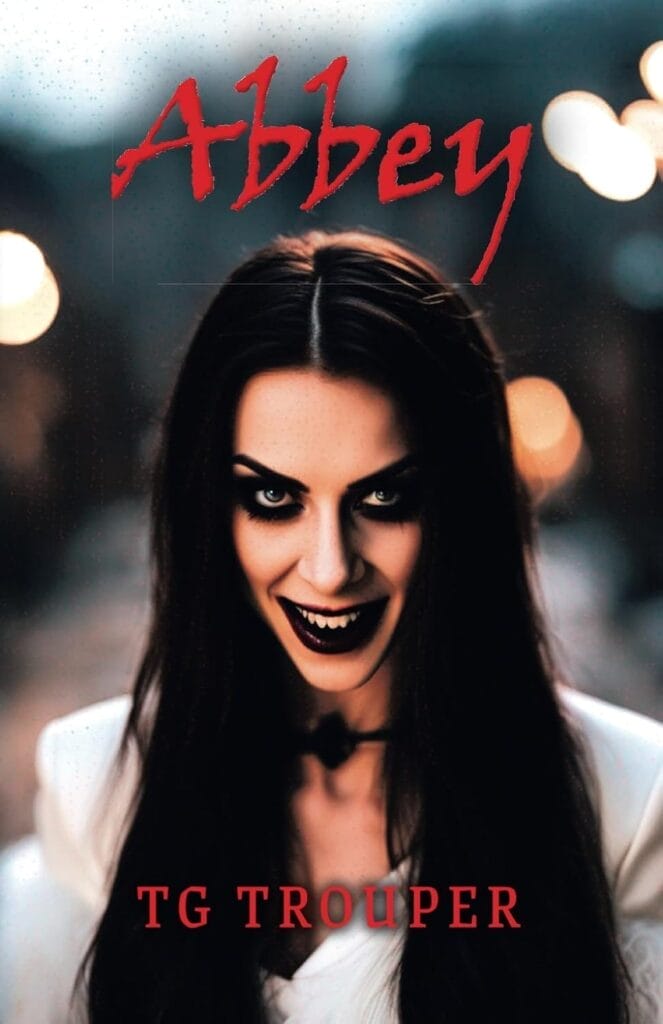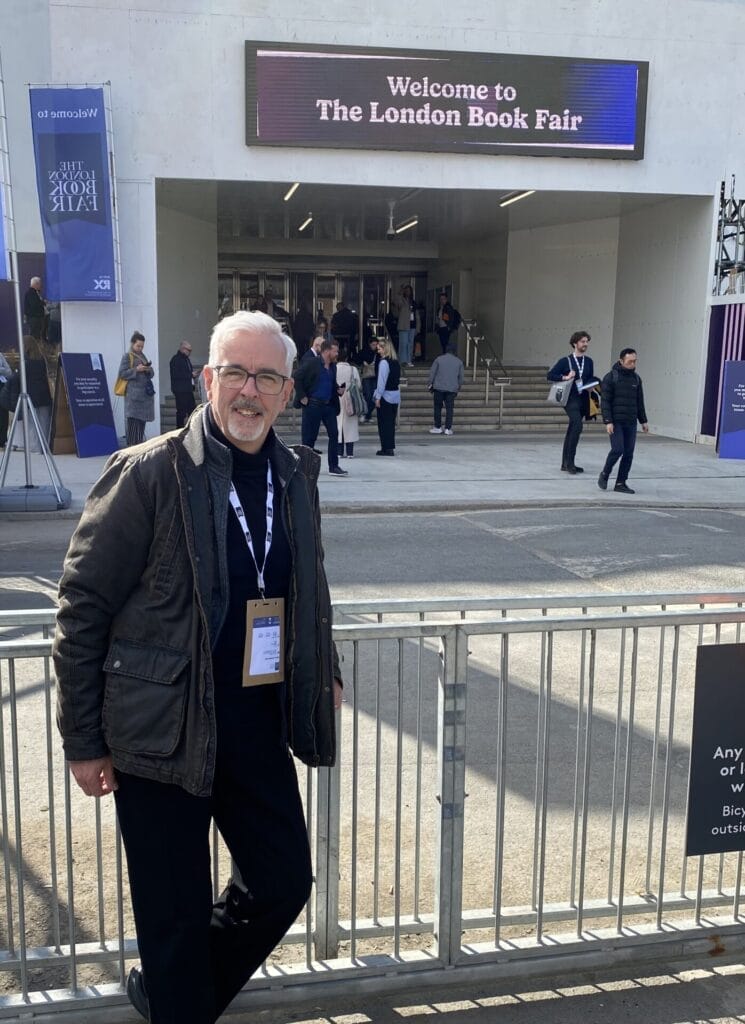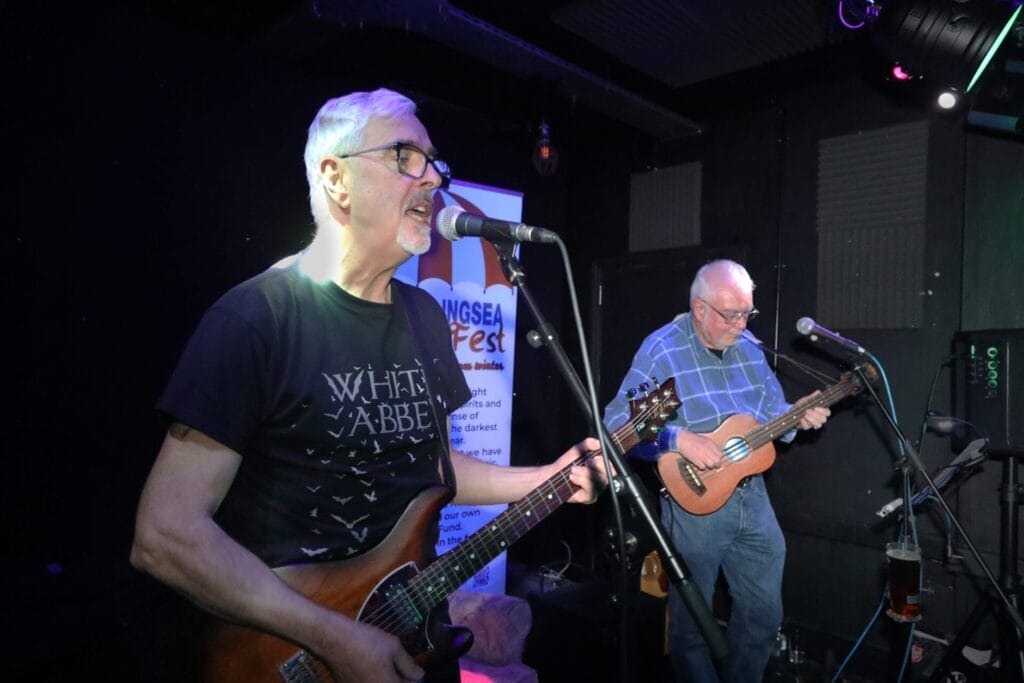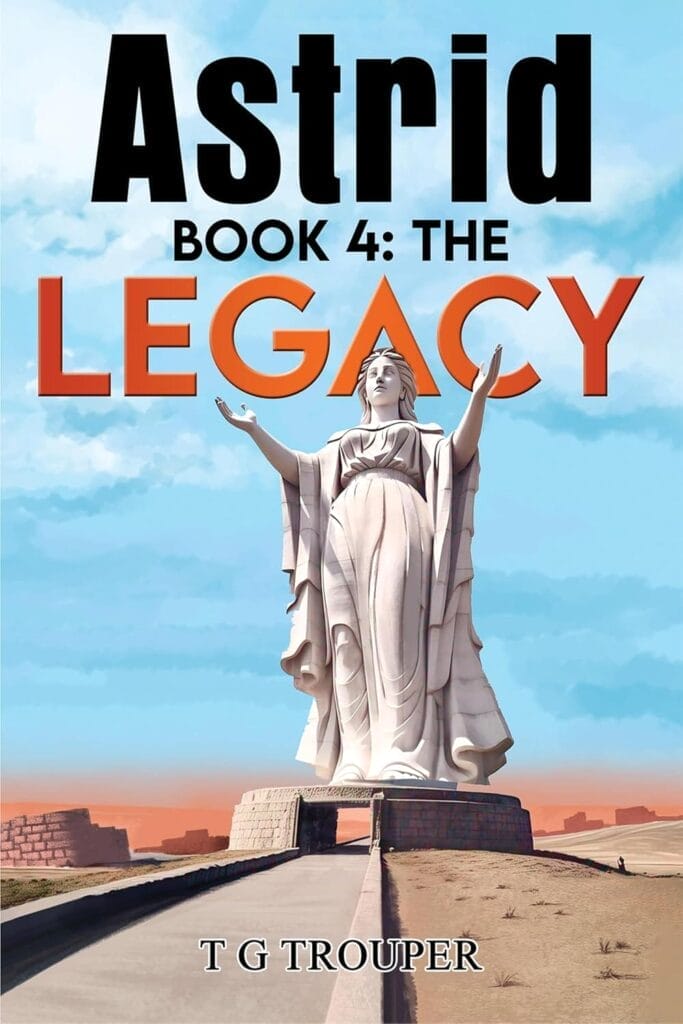TG Trouper’s latest novel, “Abbey“, plunges readers into a darkly atmospheric world where gothic horror meets contemporary identity, love, and self-discovery. Set against the iconic ruins of Whitby Abbey, the book tells the story of Abbey, a vampire born under extraordinary circumstances at the turn of the millennium, and her journey of growth, vengeance, and connection. In an exclusive interview, Trouper shared the inspiration behind the story, the meticulous world-building process, and the emotional heart of his narrative that balances supernatural thrills with LGBTQ+ representation.
This article may include affiliate links. Click here to read our full Affiliate Disclosure. If you make a purchase through one of these links, we may earn a commission at no additional cost to you.

The author describes the creation of “Abbey” as an almost instantaneous burst of inspiration: a visit to Whitby Abbey itself provided the spark for the entire story, from the discovery of the baby in the ruins to the harrowing journey of self-realisation and love that unfolds.
TG Trouper explains that Abbey is not just a creature of the night but a character imbued with deep emotion, moral complexity, and an unwavering protective instinct toward those she loves. The novel also explores the dynamics of her relationship with Madeline—a tender, queer romance that grows amid the shadows of Gothic horror—and juxtaposes Abbey’s predatory instincts with moments of empathy and care, creating a layered, compelling narrative.

To start off, could you introduce readers to your latest novel, “Abbey”? What can they expect from this gothic-meets-contemporary vampire tale?
It is a tale of naivety, growth, and ultimately love, more importantly, the protection Abbey gives to one she loves.
What first drew you to the idea of setting the story around Whitby Abbey, a location so deeply rooted in gothic horror thanks to Dracula?
I wanted to write a series of horror stories in different styles. I already had “Perfect Strangers”—a “Tales of the Unexpected” / “Hammer Horror” story. I followed that with “The Story – Be Careful What You Read”, a supernatural suspense tale of a possessed eBook that takes over a man’s life. That was followed by “The Twinmere Beast”, a monster horror. The next logical step was a vampire story.
I went to Whitby for some vampire inspiration, and oh my, did I get it. Looking back from St Mary’s Church, the harbour is visible, and I imagined seeing the new millennium celebrations taking place, but being frowned on by a naïve couple who are at the door of St Mary’s. They hear a newborn baby’s cry and find a baby girl; they have no idea what she is.

You’ve mentioned that when you stood at that corner of Whitby Abbey, you immediately had the story. What sort of emotions were you feeling in that moment, and how did it shape the direction of “Abbey”?
I felt the greatest rush of inspiration that I have ever had. When you get up the steps to Whitby Abbey, the first thing you see are the gravestones in St Mary’s churchyard, and that has an effect. The wind has carved some of them into organic shapes; that fired my imagination. I already had the bare bones of the story in my head, but moving into the actual ruin, I felt the history, and seeing the iron gate across the doorway was like the story was already written for me.
I usually get inspirations for my stories in dribs and drabs over the course of a few months. On seeing the gate, I had the whole thing! I knew exactly what would happen at every point in the story. I have to say at this point that I was staying in the Royal Hotel, and it wasn’t until I got there that I found out that the Royal was where Bram Stoker would go when he was writing Dracula. So my juices were already flowing, so to speak. As a result, it was just six months from the first word typed to the book finished and published.

“Abbey” reimagines the classic vampire myth through a modern, LGBTQ+ lens. Why was it important for you to bring contemporary identity and representation into such a traditional genre?
It was very important to me. I wanted to represent the world we live in now, where gay couples can express themselves openly—as is their right. For reasons explained in the story, Abbey has a justifiable dislike of men, and I also found the trope of a male vampire feasting on beautiful women to be a touch tired.
“Dracula” wasn’t the first major vampire novel. Sheridan Le Fanu’s “Carmilla” predates it by 26 years. In that story, the beautiful Carmilla visits Laura in her sleep. Carmilla is a vampire that feasts on young women. The fact that a novel written by a man in 1871 could have such strong sapphic overtones is remarkable. I hadn’t read “Carmilla” at the time, but I have since.

The protagonist, Abbey, discovers her vampire heritage in isolation and must conceal her nature from those closest to her. How did you approach balancing her supernatural story with the emotional realism of self-discovery and secrecy?
Acolytes have kept the authorities at bay, but as she hits 12, she starts to realise that she is different, but doesn’t know how. Her isolation has given her no point of reference. At the age of 14, an acolyte gives her a first taste of human blood and tells her what she is. Her powers grow slowly, as does her resentment of the hyper-religious couple who have raised her. At 16, she moves away, and at 18, she has her full powers.
The dynamic between Abbey and Madeline is a key emotional thread in the book. What inspired their relationship, and what did you want it to represent within the story?
As often happens in the human world, Abbey was out one night but not looking for a partner. She was already drawn to females because she found men boorish. She uses her stunning looks to lure men for sex, but they become her victims. She sees Madeline in a pub, and it is clear to Abbey that Madeline is a reluctant sex worker. Realising what the man with her would be like, she wants to make sure Madeline gets paid properly.
After a while, Abbey realises that for the first time ever, she has feelings for someone and seeks her out. At first, Madeline does not realise that Abbey is in love with her. For her part, Abbey feels another emotion that she has never had before, fear. She is desperate to keep what she is from Madeline and feels fear at the thought of scaring her away.

Gothic horror often relies on atmosphere as much as plot. How did you go about capturing that eerie, timeless feeling of Whitby Abbey while keeping the story accessible to modern readers?
Abbey lives 300 miles away from Whitby and was too young to remember Whitby Abbey, but one day in a market, she sees a painting of the Abbey and instantly feels a connection. They go there, and Abbey’s eyes are constantly drawn to the ruin. She effortlessly climbs the 199 steps and says it was like the ruin was pulling her up. Madeline comments on the wind-carved stone and says that it’s like the ruin was alive.
You’ve described Abbey as “a new breed of vampire”. Could you elaborate on what sets her apart from traditional vampire archetypes?
Abbey was not bitten by another vampire. There had been no vampires for hundreds of years, and the spirits of all former vampires had coalesced. She was not born; she came into being as the clock struck midnight on December 31st, 1999, created from nothing by their energy. She has immense strength and can move almost instantly from one place to another. She has emotions. She is not affected by sunlight and can move during the day, though her powers are weaker. She draws energy from the moon, particularly a full moon.

Trauma and healing appear to be important undercurrents in “Abbey”. How did you ensure those themes were portrayed with sensitivity while still maintaining the dark, gothic tone of the novel?
I tried to show that even as a vampire, Abbey felt love, an intense love. But also the fear of losing Madeline. She hints at things, saying to Madeline to never be afraid of her, and that she would always protect her, that no one would ever hurt her again. At night, when Madeline is sleeping, Abbey leaves to find victims, even saving a woman from a rapist.
Then one night, Abbey is plucking up the courage to tell Madeline, when a situation occurs, and she is forced to reveal her true self. Madeline is terrified and runs away. Abbey sits on a park bench for four days and nights, desperately hoping that Madeline will return.

You’ve written across multiple genres—from thrillers to supernatural horror and dystopian fiction. How did your previous works prepare you for writing a story as layered and emotionally charged as “Abbey”?
It’s been a gradual process. I have written love stories before, including sapphic love. But nothing as intense as the feelings that Abbey has.

After decades in the live music industry, what lessons or experiences from that world have influenced your storytelling? Do you find any parallels between performing arts and writing fiction?
There are definite parallels. Whether it’s music, dance, acting, or writing, you are creating a world for people to lose themselves in—somewhere their mind can go. Get it right, and people will stay anchored there until the performance or the story is finished. If you do get it right, they leave with that world still in their head.
I actually try not to include any stories from my time in the live music biz, simply because nobody would believe the sheer idiocy, arrogance, and ego that pollutes that industry.

Your earlier “Astrid” series took readers into the world of female-led war stories, while “Abbey” dives into gothic horror. How do you approach shifting between such distinct genres, and what connects your work across them?
I made the conscious decision to not stick to one genre, as in doing so, I feared I would write the same story over and over. That works for some people, but for me, I wanted the challenge. A recurring theme in my stories is people pretending to be something that they’re not. From Astrid, the young actress caught up in a war, who uses her acting skills to become multiple different characters and hide in plain sight, all the way to Abbey, the vampire pretending to be a mortal, so as to not lose the love of her life.

“The Branford Chronicles”—”Karla’s Story” and “The Burning”—both released earlier this year, mark another major step in your writing journey. What inspired this series, and how does it differ from your previous books in tone and message?
The Branford Chronicles is a crime series. “Karla’s Story” was intended to be a stand-alone, but towards the end of the story, I introduced a female detective, Naomi Charlton, and I liked her character so much, I decided on a series that would follow her character arc. All the inspirations come from real events, some with very little exaggeration. There are now 9 books written in the series, two being available now, number 3 will be out sometime next year, with the others to follow.
Though they are numbered, book 1, “Karla’s Story” should have been a stand-alone. “The Burning” and the rest of the books in the series can be read without having read Book 1. Books 2 through to 9 feature strong LGBTQ+ themes. Without wishing to give too much away, I have included LGBTQ+ themes that I have personally witnessed and direct quotes. My intention is to not sensationalise gay relationships or drop into clichéd tropes, rather to portray them as routine, or even ordinary.


“The Collaborator” explored dystopian themes and moral choices in an imagined world. Did any of the lessons or ideas from that story influence your writing of “Abbey” or your approach to complex characters?
Very much so. There are five very complex characters in “The Collaborator”, two especially so. They have to hide their motives and get ever more desperate as the story progresses. That prepared me for the feelings that Abbey would have.

“Abbey” tackles identity, gender, and attraction through a gothic-horror framework. What do you hope readers, particularly LGBTQ+ readers, take away from Abbey’s journey?
That love is love, and it can happen to anyone at any time, even a vampire.
Finally, what’s next for you after “Abbey”? Can readers expect a return to this world, or are you already exploring new ideas in another genre?
The fourth and final instalment in the Astrid series was actually published on October 10, i.e. last Friday. I was actually asked to write a fourth by a fan of the first three. I didn’t want to go over old ground, so I’ve written it from the perspective of the embittered daughter of a soldier Astrid had killed during the war. Over the course of many years, the daughter gradually finds out Astrid’s role in her father’s death. The story is about the corrosive effects of propaganda and the unwillingness of people to believe the truth.

The next book to be published will be “The Branford Chronicles Book 3: An Unwelcome Passenger”. It’s a crime story where a person gets infected with a parasite and takes disastrous risks. In it, detective Naomi Charlton and her partner Josephine McMurray get married, and suddenly Naomi has to juggle her police work investigating a murder alongside her new role as a wife.

There will be a sequel to “Abbey”, though it won’t be a re-run; instead, it will be a whole new story, but I don’t have it all in my head yet. Likewise, there will be a sequel to “The Collaborator”, that will be a story run-on. In the meantime, I have flipped genres again, and I’m writing a steampunk-themed story set in 1900s Britain. The working title is: “A Machine To End All Wars”.

I’m also just getting the first few ideas for a werewolf novel set in a contemporary, but alternative Europe.
Thank you, TG Trouper, for taking the time to answer our questions. It’s been a pleasure diving into the world of “Abbey” and learning more about your creative process. Your ability to weave gothic horror with heartfelt emotion and authentic LGBTQ+ representation makes for a truly captivating read. We also want to thank you for continuing to include and normalise LGBTQ+ characters—your reminder that “love is love, and it can happen to anyone at any time, even a vampire” is both powerful and deeply appreciated. You’re a brilliant writer with a gift for breathing new life into classic genres, and we can’t wait to see where your imagination takes us next.
Looking ahead, TG Trouper hints at exciting new projects spanning multiple genres, including a sequel to “Abbey”, future instalments in “The Branford Chronicles”, and explorations of steampunk and werewolf fiction. With his signature ability to blend suspense, emotion, and imaginative storytelling, Trouper continues to offer readers worlds where gothic horror, human experience, and contemporary identity intertwine, leaving fans eager for each new chapter of his writing career.
“Abbey”, by TG Trouper, is available to purchase as an e-book via Amazon Kindle and a paperback via Amazon.

Follow TG Trouper on social media here:
Share this article and tag us @GoodStarVibes to let us know all your thoughts on our interview with TG Trouper and our discussion about his novel “Abbey”.
Have any thoughts?
Share your reaction or leave a quick response — we’d love to hear what you think!






